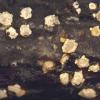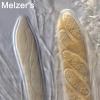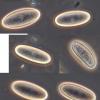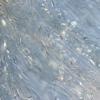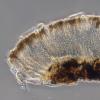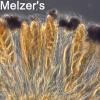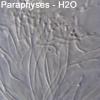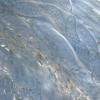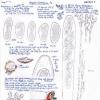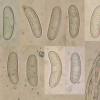
02-01-2026 17:43
MARICEL PATINOHi there, although I couldn't see the fruitbody, I

04-01-2026 17:45
 Stephen Martin Mifsud
Stephen Martin Mifsud
I was happy to find these orange asmocyetes which

03-01-2026 13:08
Niek SchrierHi all,We found groups of perithecia on a Lecanora

29-12-2025 17:44
Isabelle CharissouBonjour,J'aimerais savoir si d'autres personnes au

01-01-2026 18:35
Original loamy soil aside a artificial lake.The co

31-12-2025 19:27
Collected from loamy soil, at waterside (completel
Unknown Stictidaceae sp.
Joey JTan,
24-07-2014 21:23
The apothecia are about 1 mm in diameter and immersed in the host tissue. They erupt from the bark and have a stellate appearance; the hymenium looks granular/powdery with a hand lens.
The subhymenium is colourless and appears to be emerging directly from the host tissue. The hymenium is full of crystals and paraphyses are filiform, often branched, and look knobby/swollen at the apices. Asci are cylindrical, somewhat thick-walled, J- (Melzer's), and I could not see a defined apical apparatus. The ascospores are broadly epllipsoidal, avg. 25 x 10 um.
I apologize for the image quality, I have lots of specimens to go through and very little time!
Thank you very much,
- Joey
Chris Yeates,
24-07-2014 21:39

Re : Unknown Stictidaceae sp.
Hi
surely not Stictidaceae, the spores and particularly the ascus apex are inconsistent with that family. Image quality is pretty good ;)
regards
Chris
surely not Stictidaceae, the spores and particularly the ascus apex are inconsistent with that family. Image quality is pretty good ;)
regards
Chris
Joey JTan,
24-07-2014 21:45
Re : Unknown Stictidaceae sp.
Yes, not a Stictidaceae sp. I was thinking it may have been treated as such in the old literature (e.g.: Stictophacidium sensu Sherwood).
Thanks
Thanks
Hans-Otto Baral,
24-07-2014 21:47

Re : Unknown Stictidaceae sp.
Were the spores with two large guttules when alive? Is the spore photo on water?
My guess is a Propolis. Asco should be negative also with Lugol (Melzer is not good, gives also often negative reaction in Stictidaceae).
But I wonder about the crystals, maybe very small ones among the paraphysis tips?
My guess is a Propolis. Asco should be negative also with Lugol (Melzer is not good, gives also often negative reaction in Stictidaceae).
But I wonder about the crystals, maybe very small ones among the paraphysis tips?
Joey JTan,
24-07-2014 21:53
Joey JTan,
24-07-2014 22:08
Re : Unknown Stictidaceae sp.
Hans,
I made another cross section mounted in water and noticed many (living) spores with larger aggregated guttules than those in my first picture, however I did not see any with two large guttules.
The crystals are quite interesting. They appear to be rather uniformly distributed throughout the hymenium and I have not seen them associated with the tips of the paraphyses.
I made another cross section mounted in water and noticed many (living) spores with larger aggregated guttules than those in my first picture, however I did not see any with two large guttules.
The crystals are quite interesting. They appear to be rather uniformly distributed throughout the hymenium and I have not seen them associated with the tips of the paraphyses.
Hans-Otto Baral,
24-07-2014 22:13

Re : Unknown Stictidaceae sp.
In your fifth picture I think I see this mass of crystals. But is it that they disappear in melzer? Or why are they not shown on the closeups? Are they really crystals, because there exists also oleaginous substances that are interspersed in the hymenium in some taxa.
If the spores are multiguttulate then this is a good charcater because in Propolis only a few have it. But I know only such with broadly ellipsoid spores, e.g. P. leonis.
If the spores are multiguttulate then this is a good charcater because in Propolis only a few have it. But I know only such with broadly ellipsoid spores, e.g. P. leonis.
Joey JTan,
24-07-2014 22:39
Re : Unknown Stictidaceae sp.
I am not entirely sure if they are crystals or a refractive oleaginous substance as you mention. When Melzer's was added to a mount made in water, the "crystals" disappeared.
P. leonis has been found on Picea, so it may be a good place to start. Thank you very much.
P. leonis has been found on Picea, so it may be a good place to start. Thank you very much.
Hans-Otto Baral,
24-07-2014 23:00



